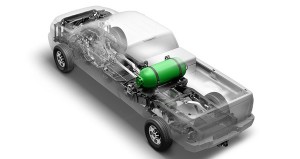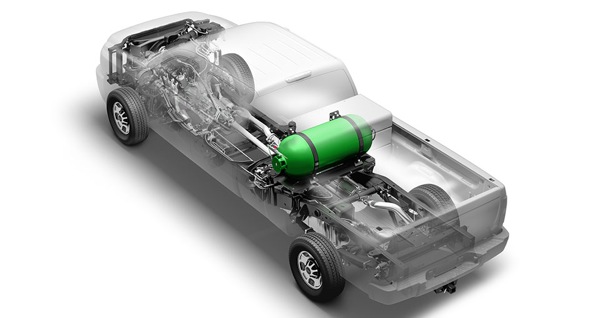 The issue of the automotive and heavy-duty industry moving toward more alternative fuel useage will always be an important topic of discussion for the rebuilding industry. And, no matter which side of the fence you are on regarding a reduction in petroleum in today’s vehicles, alternative fuels may provide more engine-related opportunities to your business.
The issue of the automotive and heavy-duty industry moving toward more alternative fuel useage will always be an important topic of discussion for the rebuilding industry. And, no matter which side of the fence you are on regarding a reduction in petroleum in today’s vehicles, alternative fuels may provide more engine-related opportunities to your business.
In issues past, Engine Builder magazine has taken a look at numerous alternative fuels and their impact on engine builders, including natural gas, biodiesel, ethanol, etc. In this year’s Green Strategies Guide, we turn our focus toward propane (known as autogas) as a viable alternative engine fuel that’s opening niche prospects for our industry.
While the use of propane as a vehicle fuel is on the rise, many rebuilders and other engine specialists in the auto and truck industry have not serviced engines using autogas. But that is expected to change in the near future, as more fleets begin to operate their vehicles with propane-autogas.
First off, you should know that there are basically two types of propane vehicles: dedicated and bi-fuel. Dedicated propane vehicles are designed to run only on propane, while bi-fuel propane vehicles have two separate fueling systems that enable the vehicle to use either propane or gasoline.
According to the Alternative Fuels Data Center (AFDC), propane vehicle’s power, acceleration and cruising speed are similar to those of conventionally-fueled vehicles. The driving range for dedicated and bi-fuel vehicles is also comparable. Extra storage tanks can increase range, but the tank size and additional weight affect payload capacity.
Low maintenance costs are one reason behind propane’s popularity for use in light-duty vehicles, such as pickup trucks and taxis, and for heavy-duty vehicles, such as school buses (seen here). Propane’s high octane rating (104 to 112 compared with 87 to 92 for gasoline) and low carbon and oil contamination characteristics have resulted in documented engine life of up to two times that of gasoline engines. Because the fuel’s mixture (propane and air) is completely gaseous, cold start problems associated with liquid fuel are reduced.
Compared with vehicles fueled with conventional diesel and gasoline, propane vehicles can produce lower amounts of harmful emissions, depending on vehicle type and drive cycle.
For more on how autogas can impact engine builders, we turned to Michael Taylor, director of autogas business development at the Propane Education & Research Council (PERC).
Taylor said one of the biggest challenges for today’s engine builder regarding retrofitting an engine to operate on LPG is training. “Retrofitting or converting an engine to operate on propane autogas can be complicated if the engine builder has not received proper training regarding the systems and required installation processes and procedures,” Taylor said. “Today’s liquid propane injection systems are very similar to current automotive technology, but requires technicians to have some applicable knowledge regarding propane autogas as a motor fuel combined with high level expertise in installation, troubleshooting and diagnostics.”
Taylor said if an engine builder is designing and developing a purpose built, gaseous fueled engine designed to operate with propane autogas as the primary fuel from scratch, there may be some modifications which are based solely on the characteristics of the fuel.
“Modifications may include the engine block, heads, pistons and rings, valves and seats, intake manifold, injectors, fuel lines and the fuel delivery system as well as calibration and optimization requirements to ensure the engine operates at peak performance,” he said.
“However, if an engine builder is converting an existing engine with a certified EPA- and/or CARB-compliant propane autogas system, typically the systems are ‘plug and play’ and do not involve major engine modifications outside of the installation of propane autogas injectors, fuel rails, fuel lines, fuel tank and some electrical components designed to ensure the engine performs at the highest level possible. Each manufacturer’s systems may vary slightly in components but major modifications to existing engine components are not required.”
While Taylor said an engine builder shop is not mandated to be EPA certified to perform LPG conversions, PERC does not condone or support the installation of any systems that have not secured the required EPA certification(s).
“We encourage engine builders to seek out and work with certified systems manufacturers only. These reputable manufacturers have invested significant amounts of money and time required to obtain EPA emissions certification requirements and will provide the highest level of training, warranty and support for their products,” he said.
Taylor and others belive that propane autogas and bi-fuel aftermarket conversions will continue to be a significant market niche for a number of reasons.
“The high price of conventional fuels and increased maintenance and repair costs directly linked to the increased emissions equipment required to comply with EPA certification are the major contributing factors when fleets consider the switch to propane autogas conversions,” Taylor said, adding suppliers like ICOM North America, IMPCO, Alliance Autogas, Clean Fuel USA and Bi-Phase now offer hundreds of certified systems and their businesses have experienced significant growth in light-duty, medium-duty and heavy-duty vehicle conversions.
While sales of dedicated and bi-fuel propane autogas certified systems have increased in all 50 states, significant increases are taking place in regions or states that offer incentives which offset initial conversion and operations costs. Taylor said currently, Texas, Florida and California are extremely supportive of alternative fuels expansion and offer very aggressive incentives which highly favor propane autogas conversions. Federal and state grant and incentives information can be found on the Department of Energy Alternative Fuels Data Center at www.afdc.energy.gov/fuels/propane.html.
Converting the Converters
Taylor said engine shops looking to perform autogas conversions will discover that system complexity varies by manufacturer and requires engine specialist training to ensure the engine conversion is compliant once the process is completed.
“Highly trained, experienced certified technicians typically can install a complete propane autogas conversion within eight hours,” he said.
“Additional fuel tanks or vehicle modifications required to accommodate the equipment can lengthen or shorten the installation time period.”
One of the biggest misconceptions regarding efficiency of LPG in automotive and heavy-duty truck engines is that propane doesn’t have the power of a comparable diesel engine.
“While this is an appealing argument, propane autogas engines have proven they can actually outperform their diesel counterparts in most applications while providing a quieter, safer passenger compartment and eliminate all contamination and carcinogen concerns,” Taylor said. “Propane has an octane rating of 104 and power is not a challenge for our fuel.”
Taylor explained for the most part, aftermarket engines which are converted to propane autogas do not require a turbocharger or supercharger.
“If the engine builder is developing a purpose built gaseous fueled engine, a turbocharger or supercharger may be used to increase engine performance, improve air flow and fuel combustion while reducing engine emission.” he said.
While increased engine longevity is reported in customer’s claims and feedback, PERC cannot validate longer engine life associated strictly to deployment of propane autogas fuel. “It is well documented that propane autogas is inherently a cleaner burning fuel during the combustion phase than gasoline or diesel and many fleets do report less engine wear and tear with propane compared to conventional fuels.
One fact that we can cite and validate is that propane autogas does not require the complicated, extensive emissions equipment required by conventional fuels; therefore, fleets are reporting reduced operations costs which translates into less maintenance and less downtime, which should support the claims for a longer lasting engine.”
Conversion Details
Taylor explained that a gasoline engine conversion to a propane autogas systems vary in complexity. The average price range is $6,000-$12,000 and will depend on a number of factors which include the choice of OEM dedicated or aftermarket bi-fuel systems, engine family and class and the number of fuel tanks required.
For now, diesel engine conversions to propane autogas is a new and developing field. There are no EPA- and/or CARB-certified systems available for diesel engine conversions; however, PERC continues to pursue the development of this technology through the investment of research and testing funds with reputable companies who are pursuing this highly coveted product.
For more information on propane autogas and other alternative fuels, check out the following sites.
• The Propane Education & Research Council (PERC) promotes the safe and efficient use of odorized propane gas. It accomplishes this through wide-ranging programs that support safety, training and the development and commercialization of promising propane technologies. www.propanecouncil.org
• The Alternative Fuels Data Center (AFDC) is a comprehensive clearinghouse of information about advanced transportation technologies. The AFDC offers unbiased info, data and tools related to the deployment of alternative fuels and advanced vehicles. www.afdc.energy.gov/vehicles/propane.html
• A visionary company founded in 1993, CleanFUEL was the first in the U.S. industry to develop liquid propane fuel injection systems. For 20 years, the firm has maintained a reputation for providing safe, reliable and cost-effective vehicles, stations and dispensers that comply with environmental regulations. www.cleanfuelusa.com
• American Alternative Fuels is a leader in bringing practical alternative fuel technology to the fleet vehicles of America. The organization researches and tests the latest fuel technologies to determine the most cost-effective and practical approach for various applications. Current options include LPG (Propane), CNG (Natural Gas) and electric high- and low-speed vehicles. www.aafuel.com
• National Alternative Fuels Training Consortium (NAFTC) is a pioneer in developing, managing, and promoting programs that focusses on improving energy independence and encouraging the use of cleaner transportation. The NAFTC provides alternative fuel vehicle and advanced technology vehicle training to mechanics and technicians. http://naftc.wvu.edu













